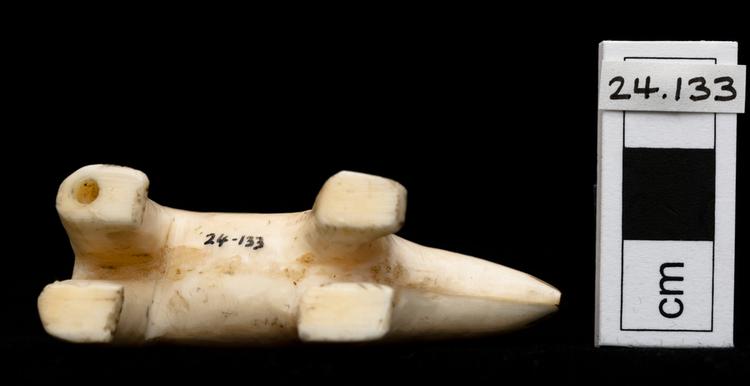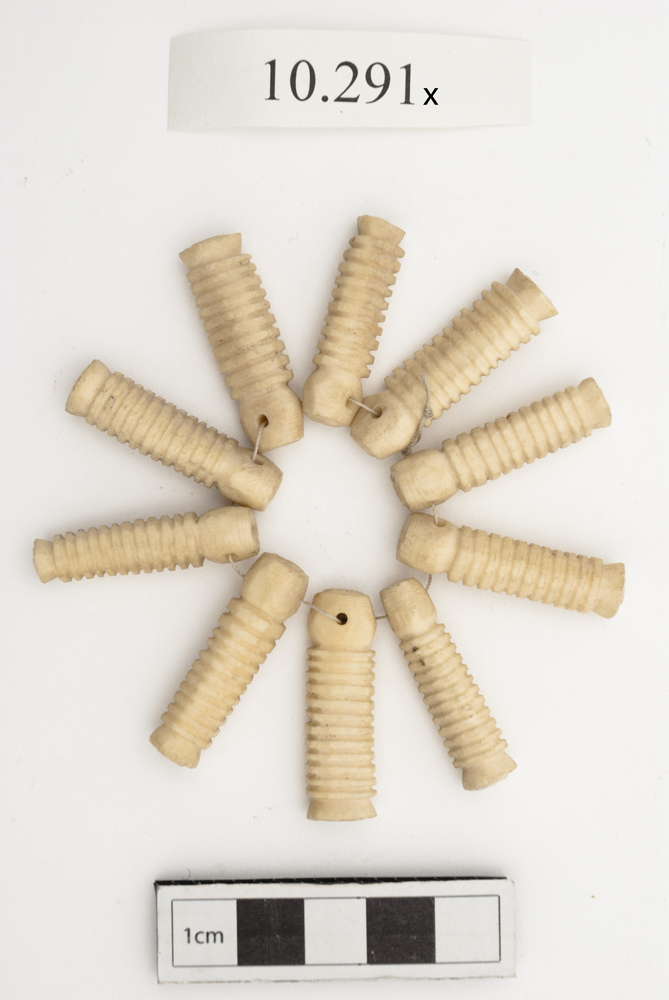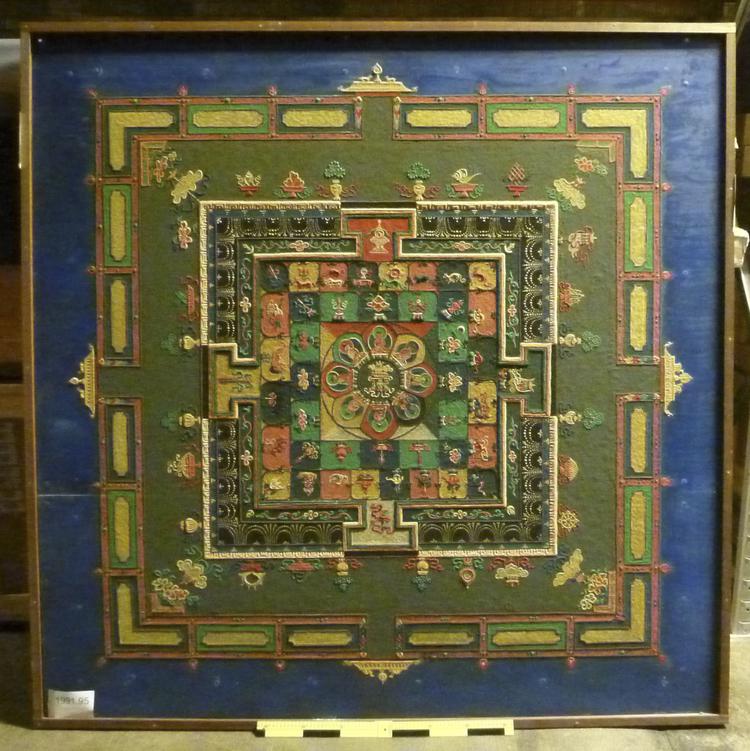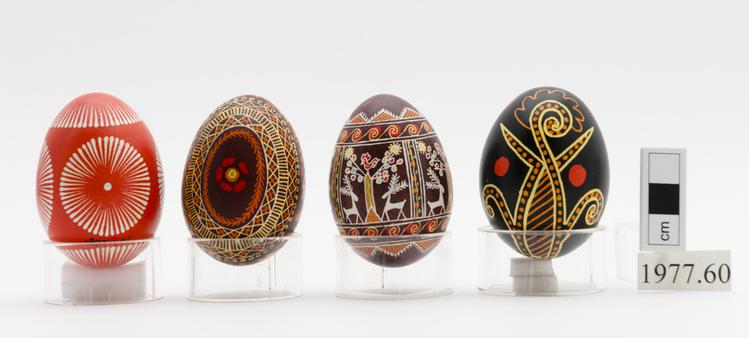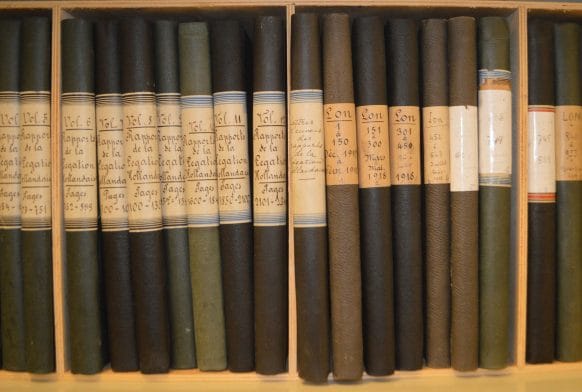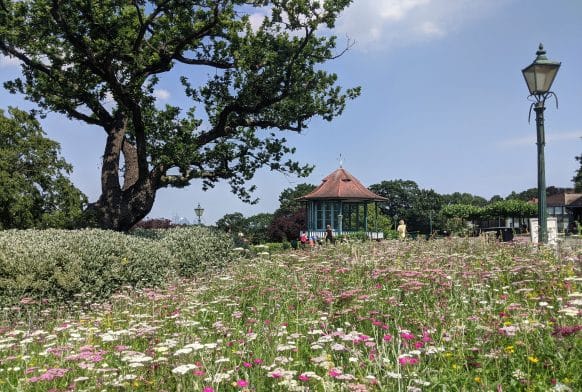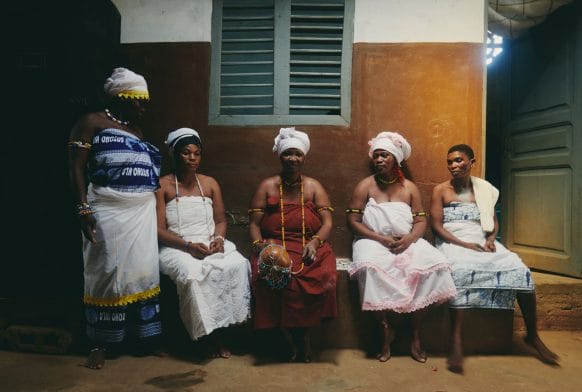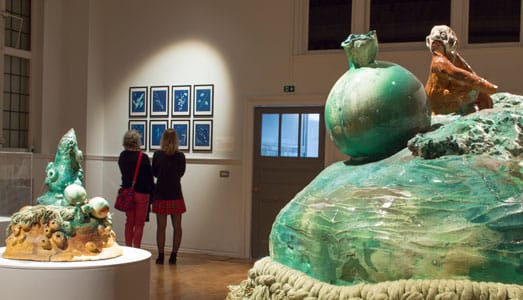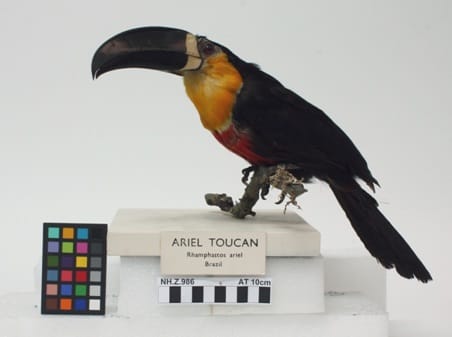Oval headband made from a decorated piece of barkcloth. This is attached to a stiff ring of plant fibre (possibly a leaf?). The decoration of the textile is divided into panels separated by stripes. Some of the decoration is painted with black pigments. The coloured diamonds and stripes consists of appliquèd yellow and red cotton textile. The half diamonds and outlines of the small diamonds consist of embroidery. The stitches fix the barkcloth to the backing material. The diamond shapes are decorated with small round paillettes, possibly of mica.
'The women of Central Sulawesi wear headbands, tali bonto or tali walu, across their foreheads to keep the hair off their faces. Various materials may be used: beads, bast cloth, or rattan. Designs differ from village to village, although the range of colours is generally the same: red, yellow, black and white. Bast cloth headbands are painted with simple geometric designs and sometimes ornamented with embroidery sticthes in coloured cotton. On occasion, they may be decorated with strings of flowers, leaves or fringes.' The example illuastrated in the booklet, museum no. 16687, is described as follows: 'This headband is made of fine white bast cloth stuck to the outer surface of a thin piece of bamboo. The bast was probably applied to the bamboo when still wet, and it therefore appears to be glued on. It was then reinforced with stitching wich perforates both layers and holds them firmly together. The band forms a continuous circle. It has been painted with black and red colouring matter, with a touch of yellow, in simple stripes, tumpal, and traingles.' A guide to the Sulawesi ethnological collection. National Museum, Jakarta. 1984.



